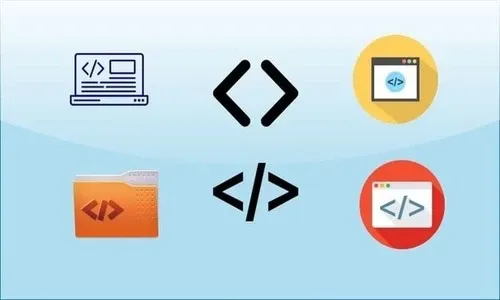



 Tech & IT
Tech & IT
 Business
Business
 Coding & Developer
Coding & Developer
 Finance & Accounting
Finance & Accounting
 Academics
Academics
 Office Applications
Office Applications
 Art & Design
Art & Design
 Marketing
Marketing
 Health & Wellness
Health & Wellness
 Sounds & Music
Sounds & Music
 Lifestyle
Lifestyle
 Photography
Photography
More Learnfly
Business Solution Become an InstructorInvesting involves allocating resources to assets like stocks, bonds, or real estate with the expectation of earning returns over time. It encompasses various strategies, risk assessments, and financial analysis to optimize growth and achieve financial goals.

By : Satyendra singh
Financial Market, Fixed income securities, Ratios, Valuations , Modern portfolio the...
4.8 276
3:42:49 hrs 10 lectures Expert Level

By : Satyendra singh
Financial Statements, Balance Sheet, Income Statements, Cash Flows, Financial Ratios,...
4.5 205
2:13:10 hrs 12 lectures Intermedite Level

By : Satyendra singh
Economic analysis, Intrinsic value, DCF, Valuation, Industry analysis, Corporate acti...
4.5 140
18 lectures Expert Level

By : Dinesh Kumar (NISM Certified)
Become A Successful Trader...
4.4 174
1:13:10 hrs 19 lectures All Level

By : Nrupen Masram
Invest In Stocks That Can Generate Profits In Less Than 3 Months....
4 175
1:36:42 hrs 24 lectures All Level

By : Nrupen Masram
An Easy-To-Learn and Easy-To-Apply Profitable Moving Average Trade System...
4 218
1:39:55 hrs 12 lectures All Level

By : Satyendra singh
Cash flows, balance sheet, Intrinsic value, Income statements,valuation concepts, cor...
4 248
5:51:40 hrs 23 lectures Expert Level

By : Amir Rimer
The NFT Essentials course 2023 will teach beginners how to create, buy, and sell NFTs...
4.5 223
6:2:10 hrs 76 lectures All Level












Learn more topics in various categories at one place. Explore unlimited courses in other categories and up-skill yourself today.

 Jazeb Akram
Jazeb Akram 4.2 769615 Beginner Level

 John Hedengren
John Hedengren 4.1 568093 All Level

 Ranjan Pandey
Ranjan Pandey 4.1 345825 All Level

 Pieter Vliegenthart
Pieter Vliegenthart 4.6 99977 All Level

 Muhammad Ahsan Pervaiz
Muhammad Ahsan Pervaiz 4.2 99669 All Level

 Jerome P.
Jerome P. 4.8 99430 All Level

 Senol Atac
Senol Atac 4.9 99039 All Level

 Vikas Munjal
Vikas Munjal 4.8 99003 Beginner Level

 Chandramouli Jayendran
Chandramouli Jayendran 4.9 98556 Beginner Level

 Satyendra singh
Satyendra singh16 Lectures All Level

 Satyendra singh
Satyendra singh11 Lectures All Level

 Satyendra singh
Satyendra singh10 Lectures All Level

 Satyendra singh
Satyendra singh10 Lectures All Level

 Satyendra singh
Satyendra singh15 Lectures All Level

 Satyendra singh
Satyendra singh10 Lectures All Level

 Satyendra singh
Satyendra singh19 Lectures All Level

 Satyendra singh
Satyendra singh32 Lectures All Level

 Satyendra singh
Satyendra singh12 Lectures All Level

 Satyendra singh
Satyendra singh18 Lectures All Level

 Satyendra singh
Satyendra singh48 Lectures All Level

 Satyendra singh
Satyendra singh31 Lectures All Level

 Satyendra singh
Satyendra singh18 Lectures All Level

 Dinesh Kumar (NISM Certified)
Dinesh Kumar (NISM Certified)19 Lectures All Level

 Dinesh Kumar (NISM Certified)
Dinesh Kumar (NISM Certified)33 Lectures All Level

 Dinesh Kumar (NISM Certified)
Dinesh Kumar (NISM Certified)37 Lectures All Level

 Dinesh Kumar (NISM Certified)
Dinesh Kumar (NISM Certified)31 Lectures All Level

 Dinesh Kumar (NISM Certified)
Dinesh Kumar (NISM Certified)34 Lectures All Level

 Dinesh Kumar (NISM Certified)
Dinesh Kumar (NISM Certified)37 Lectures All Level

 Dinesh Kumar (NISM Certified)
Dinesh Kumar (NISM Certified)45 Lectures All Level

 Dinesh Kumar (NISM Certified)
Dinesh Kumar (NISM Certified)33 Lectures All Level

 Nrupen Masram
Nrupen Masram24 Lectures All Level

 Nrupen Masram
Nrupen Masram8 Lectures All Level

 Nrupen Masram
Nrupen Masram15 Lectures All Level

 Dinesh Kumar (NISM Certified)
Dinesh Kumar (NISM Certified)32 Lectures All Level

 Nrupen Masram
Nrupen Masram12 Lectures All Level

 Satyendra singh
Satyendra singh27 Lectures All Level

 Satyendra singh
Satyendra singh15 Lectures All Level

 Satyendra singh
Satyendra singh23 Lectures All Level

 Dinesh Kumar (NISM Certified)
Dinesh Kumar (NISM Certified)43 Lectures All Level

 Dinesh Kumar (NISM Certified)
Dinesh Kumar (NISM Certified)40 Lectures All Level

 Amal mouna bouhlal
Amal mouna bouhlal27 Lectures All Level

 Amir Rimer
Amir Rimer76 Lectures All Level

 David Oisamoje
David Oisamoje13 Lectures All Level
.jpg)
 David Oisamoje
David Oisamoje13 Lectures All Level

 Daksh Murkute
Daksh Murkute12 Lectures All Level

 Daksh Murkute
Daksh Murkute25 Lectures All Level

 Daksh Murkute
Daksh Murkute9 Lectures All Level

 Daksh Murkute
Daksh Murkute13 Lectures All Level

 Chandramouli Jayendran
Chandramouli Jayendran115 Lectures All Level

 Tawanda Irvine Makoni
Tawanda Irvine Makoni15 Lectures All Level

 Anurag Singal
Anurag Singal27 Lectures All Level
Investing involves allocating money or resources with the expectation of generating returns or profits over time. It typically involves purchasing financial instruments such as stocks, bonds, real estate, or other assets with the goal of achieving long-term growth or income.
Investing is crucial for building wealth, preserving purchasing power, and achieving financial goals. It allows individuals and institutions to grow their assets over time, hedge against inflation, and work towards financial security and independence.
Main types include stocks (equities), bonds (fixed-income securities), real estate, mutual funds, exchange-traded funds (ETFs), and alternative investments such as commodities or hedge funds. Each type has different risk and return characteristics.
Risk is inherent in investing and refers to the uncertainty of achieving expected returns. Different investments carry varying levels of risk, and understanding and managing risk is crucial for making informed investment decisions aligned with one's financial goals and risk tolerance.
The time horizon, or the duration an investor plans to hold an investment, influences the choice of assets and risk tolerance. Longer time horizons may allow for more aggressive strategies, while shorter horizons may require a more conservative approach to protect capital.





